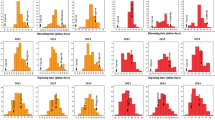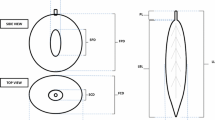Abstract.
A segregating population of 91 hybrids issued from a cross between a dihaploid rose, derived from the haploidisation of a modern cultivar, and a diploid species was used to construct linkage maps of the parental genomes. As in other recent genetic studies in Rosa, AFLPs were used as molecular markers. Two segregating qualitative traits, recurrent blooming and double corolla, already known to be inherited as single recessive and dominant genes, respectively, were recorded in the mapping population. A quantitative trait, thorn density of the shoots, was also evaluated in this population. Sixty eight and 108 AFLP markers located on 8 and 6 linkage groups could be analysed in the female and male parent, respectively. The two recorded qualitative phenotypic markers were mapped as well as the quantitative one, after having performed QTL analyses on the parental maps in the latter case. It appears that thorn quantity is controlled by a major and a minor QTL which are located on the same linkage group at 36.5 and 3.2 cM from the single seasonal-blooming gene, respectively.
Similar content being viewed by others
Author information
Authors and Affiliations
Additional information
Electronic Publication
Rights and permissions
About this article
Cite this article
Crespel, .L., Chirollet, .M., Durel, .C. et al. Mapping of qualitative and quantitative phenotypic traits in Rosa using AFLP markers. Theor Appl Genet 105, 1207–1214 (2002). https://doi.org/10.1007/s00122-002-1102-2
Received:
Accepted:
Issue Date:
DOI: https://doi.org/10.1007/s00122-002-1102-2




